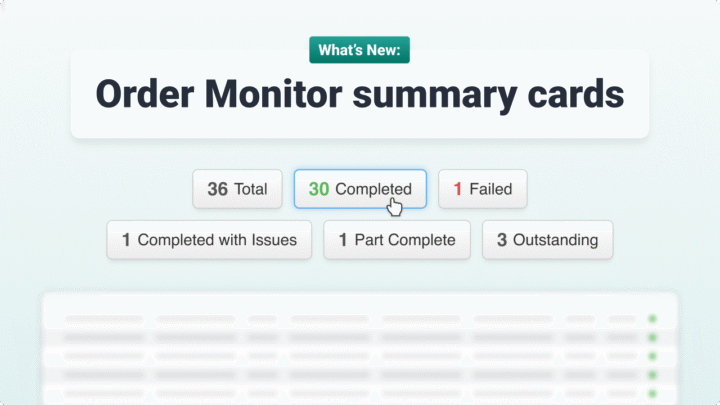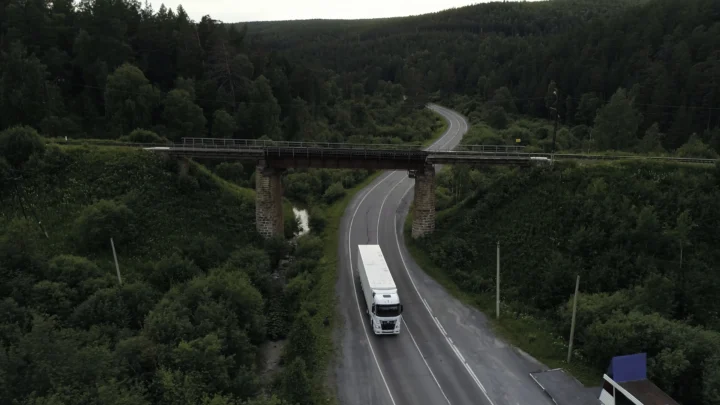The Driver and Vehicle Standards Agency (DVSA) has published a report that summarises statistics about the roadworthiness and traffic compliance of both Great Britain and non-GB based heavy goods vehicles, trailers, and public service vehicles in Great Britain from April 2020 – March 2022.
The vehicle checks detailed in the report were carried out on randomly selected vehicles at randomly selected roadside sites throughout GB. For the purpose of our analysis we will be focusing on GB HGVs, while also outlining what fleet compliance checks are and the methodology behind them.
Why fleet compliance checks are carried out
Fleet compliance checks are carried out by DVSA examiners to determine the:
- Level of roadworthiness across the heavy goods vehicle (HGV) and public service vehicle (PSV) fleet, known as ‘condition’
- Overall level of HGV and PSV operator compliance with traffic regulations, known as ‘compliance’.
The main reasons why this survey is funded by the Department for Transport (DfT) and carried out by DVSA are to:
- Determine trends in non-compliance with regulations and roadworthiness in order to gauge the effects of changes in legislation and the effectiveness of DVSA’s day-to-day targeted operations
- Provide information to help identify potential areas for targeting, so that DVSA’s work can be more focused
- Compare differences in condition and compliance between Great Britain (England, Scotland and Wales) and non-Great Britain vehicles.
They ultimately make our roads a safer place, while determining the level of roadworthiness across the heavy goods vehicle (HGV) and public service vehicle (PSV) fleet, known as ‘condition’. While on the other hand it assesses the overall level of HGV and PSV operator compliance with traffic regulations, known as ‘compliance’.
The data collected by the examiners allows the DVSA to determine trends in non-compliance with regulations and roadworthiness in order to gauge the effects of changes in legislation and the effectiveness of the DVSA’s day-to-day targeted operations.
It also provides the DVSA with the data required to help identify potential areas for targeting so that their work can be more focused in areas where compliance is most at risk, and it also allows the DVSA to analyse and compare differences in condition and compliance between Great Britain (England, Scotland and Wales) and non-Great Britain vehicles.
The methodology behind compliance checks
DVSA checks are typically carried out at targeted locations in areas where drivers and vehicles that are most likely to be offending are to be found, which tend to be sampled at the roadside. Due to public service vehicles being more difficult to conduct roadside (as this inconveniences passengers and disrupts schedules), PSV checks are split into two checks: one focusing on vehicle condition that is carried out in depots, and the other focusing on traffic compliance, which is done roadside.
The procedure for Heavy goods vehicles (HGVs)
In order for the DVSA to produce a representative sample of HGVs, it is necessary to conduct the checks at a diverse range of sites (in terms of geographical location). The times and days of the checks are selected proportionate to HGV traffic.
All non-GB vehicles in the country need to pass through a port or the Eurostar terminal, many of which have DVSA check sites where they are randomly selected, so a large proportion of non-GB HGV checks are conducted at or near these locations, typically as they enter a country.
The procedure for Public service vehicles (PSVs)
As alluded to, PSVs are checked differently compared to HGVs, given that the vehicles are used to transport public passengers, and the checks are performed annually with condition and compliance checks being performed in alternate years.
PSV condition checks are performed at operator premises. Examiners will visit the sites and randomly select the vehicles to check from those they encounter at the site, as a full vehicle check can be time consuming and impractical to perform while the vehicle is in service.
PSV compliance checks are performed at locations where vehicles are expected to be stationary, for example, at bus stations or tourist attractions. The Department of Transport (DfT) provides examiners with a number of checks to perform by service type but does not specify the time, date or location.
Types of fleet compliance check carried out from 2020 to 2022
The DVSA checked 6727 vehicles from 2020 to 2022, offering insight into the overall levels of driver and vehicle safety compliance over this period.
The first set of statistics identify the check type carried out during each inspection and whether or not the driver was a DVSA earned recognition member/operator. By being a DVSA earned recognition member, operators demonstrate a strong track record of compliance and adherence to standards.
In exchange for joining the scheme, these operators may benefit from a reduced number of inconvenient and costly roadside checks, as well as visits from enforcement officers, thereby reducing the administrative burden of regulation on those who achieve high levels of compliance.
It also acts as a barometer that can be used to gauge how rigorously drivers and operators maintain compliance and prioritise road safety as a whole.
| Check Type | DVSA Earned Recognition Member | Not DVSA Earned Recognition Member | Unknown or Not Applicable | Total |
| GB HGV | 199 | 2445 | 21 | 2665 |
| Non-GB HGV | 0 | 0 | 2629 | 2629 |
| PSV Condition | 114 | 494 | 0 | 608 |
| Service Bus Compliance | 91 | 169 | 2 | 262 |
| Coach Compliance | 17 | 281 | 2 | 300 |
| School Bus Compliance | 6 | 248 | 9 | 263 |
As we can see from the table above, the majority of drivers were not, in fact, DVSA earned recognition members, accounting for only 8% of HGV drivers in Great Britain checked.
Evidently, the DVSA has work to do on that front to increase popularity for the earned recognition voluntary scheme.
The report proceeds to break these figures down by the number of vehicles that were checked and the types of sanction they received during these checks.
Great Britain heavy goods vehicle (HGV) roadworthiness compliance
Types of GB HGVs checked for roadworthiness compliance
| Vehicle Type | Number of Vehicles Checked |
| Vehicles in DVSA Earned Recognition Scheme | 186 |
| Vehicles not in DVSA Earned Recognition Scheme | 2308 |
| Vehicles with unknown DVSA Earned Recognition Scheme status | 19 |
| Total vehicles checked | 2513 |
Results of GB HGVs checked for roadworthiness compliance
| Check Results | Number of Vehicles Checked |
| No defects found | 1883 |
| Inspection notice issued | 401 |
| At least one prohibitable defect | 229 |
Vehicles checked for roadworthiness compliance also continue the theme of low voluntary admittance into the DVSA’s earned recognition scheme (7.4%). Despite this, three quarters of the vehicles checked returned no defect. 16% received an inspection notice issue, while 9% registered at least one prohibitable defect.
Types of sanction given at Great Britain HGV checks
| Type of sanction | % of vehicles |
| No defect | 74.9 |
| Inspection notice | 16 |
| Delayed prohibition | 2.5 |
| Immediate prohibition | 6.6 |
As reflected in the table above, almost three quarters of the GB HGVs checked had no defect reported, so there is still room left for improvement on this front, but it also suggests that drivers and operators are making a concerted effort to maintain vehicle safety.
Overall, there were 320 prohibition defects found, which can either be categorised as ‘delayed’ (2.5%) or ‘immediate’ (6.6%). An immediate prohibition means you’re not allowed to drive your vehicle until the problems have been fixed. A delayed prohibition means you have up to 10 days to fix an issue, but the vehicle can still be driven within this period.
Ultimately, operators want to keep their vehicles on the road as much as possible, preferably by conducting rigorous walkaround checks before a vehicle is used avoiding such sanctions
The report highlights the types of prohibition defects recorded during the HGV checks, with the majority being attributed to the running gear (36.9%), lamps and reflectors (17.5%), and the engine and associated equipment (10.9%).
GB HGV traffic compliance
After presenting figures on HGV roadworthiness compliance, the report proceeds to look at traffic compliance figures.
Types of GB HGVs checked for traffic compliance
| Vehicle type | Number of vehicles checked |
| Vehicles in DVSA Earned Recognition Scheme | 198 |
| Vehicles not in DVSA Earned Recognition Scheme | 2398 |
| Vehicles with unknown DVSA Earned Recognition Scheme | 21 |
| Total vehicles checked | 2617 |
Out of the vehicles checked for traffic compliance, 263 (10%) had committed a serious offence. In this analysis, the following offences are counted as serious:
- offences resulting in a prohibition
- offences resulting in a graduated fixed penalty deposit
- level 4 offences
- level 5 offences
The prohibition rate for DVSA earned recognition operators was 2% and the rate for operators not on the scheme was 10%. The 198 vehicles in the DVSA earned recognition scheme checked for HGV traffic compliance represent a small portion of the vehicles on this scheme and should therefore be treated with caution.
In summary, the report offers interesting insight into the DVSA’s output for examining vehicles for roadworthiness and traffic compliance over this period. It paints a clear picture of the number of vehicles/operators that had joined the DVSA’s earned recognition scheme, but overall the statistics suggest that the DVSA needs to ramp up their efforts to encourage voluntary admittance into the scheme at a far greater scale.
For further statistics on non-GB trailers and HGVs, read the rest of the document here: Commercial vehicle fleet compliance checks, 2020 to 2022.
Looking to streamline your walkaround check processes? Visit our Walkaround Check feature page to find out how!
Want to read more blog articles about managing compliance for commercial fleets?
If you’re interested in fleet compliance and maintaining roadworthiness for your commercial fleet, these articles may also interest you:
Roadworthiness is a subject we keep on coming back on a regular basis, for example this article asks the question: ‘What does Roadworthiness Mean‘.
And, if you’re operating those fleets into the EU, this article looks into ‘International Operator’s Licences‘.
An element of maintain roadworthiness is completing annual tests for HGVs, buses and trailers – and how not to fail your annual vehicles tests.



